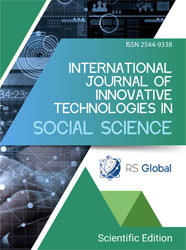UMBILICAL HERNIA: DISEASE MECHANISM, DIAGNOSIS AND TREATMENT OPTIONS – A REVIEW OF THE LITERATURE
Abstract
Introduction: Umbilical hernia (UH) is a common abdominal wall defect characterized by the protrusion of abdominal contents through the umbilical ring. UH accounts for 6–14% of adult abdominal wall hernias, with higher prevalence in specific populations such as obese individuals and those with ascites. Untreated UH can lead to complications like incarceration or strangulation. Clinical symptoms include a palpable bulge (90–100%), discomfort (50–70%), and pain (20–40%). Diagnosis is primarily clinical, supplemented by imaging in complex cases.
Objective: This review aim is to discuss current literature on UH, focusing on its epidemiology, clinical presentation, diagnostic approaches and treatment options, with an emphasis on various methods of surgical treatment, their possible effectiveness and when non-surgical management is advised.
Treatment: Surgical treatments, including mesh and suture repairs via open or laparoscopic approaches, are the mainstay, with mesh repairs showing lower recurrence rates (2–8%) compared to suture repairs (6–54%). Laparoscopic techniques offer reduced postoperative complications for larger hernias. Non-surgical management, such as watchful waiting, is limited but may be suitable for small, asymptomatic hernias.
Conclusion: Mesh-based surgery, particularly laparoscopic, are preferred for most umbilical hernia cases due to lower recurrence rates, though treatment should be individually tailored to patient and hernia characteristics.
References
Muysoms FE, Miserez M, Berrevoet F, et al. Classification of primary and lauincisional abdominal wall hernias. Hernia. 2009;13(4):407-414. doi:10.1007/s10029-009-0518-x
Rutkow IM. Epidemiologic, economic, and sociologic aspects of hernia surgery in the United States in the 1990s. Surg Clin North Am. 1998;78(6):941-vi. doi:10.1016/S0039-6109(05)70363-7
Lau H, Patil NG. Umbilical hernia in adults. Surg Endosc. 2003;17(12):2016-2020. doi:10.1007/s00464-003-9027-7
Haskins IN, Rosen MJ, Prabhu AS, et al. Umbilical hernia repair in pregnant patients: review of the American College of Surgeons National Surgical Quality Improvement Program. Hernia. 2017;21(5):767-770. doi:10.1007/s10029-017-1633-8
Dabbas N, Adams K, Pearson K, Royle G. Frequency of abdominal wall hernias: is classical teaching out of date?. JRSM Short Rep. 2011;2(1):5. Published 2011 Jan 19. doi:10.1258/shorts.2010.010071
Kulaçoğlu H. Current options in umbilical hernia repair in adult patients. Ulus Cerrahi Derg. 2015;31(3):157-161. Published 2015 Sep 1. doi:10.5152/UCD.2015.2955
Lindmark M, Strigård K, Löwenmark T, Dahlstrand U, Gunnarsson U. Risk Factors for Surgical Complications in Ventral Hernia Repair. World J Surg. 2018;42(11):3528-3536. doi:10.1007/s00268-018-4642-6
Zielsdorf SM, Kubasiak JC, Janssen I, Myers JA, Luu MB. A NSQIP Analysis of MELD and Perioperative Outcomes in General Surgery. Am Surg. 2015;81(8):755-759.
Venclauskas L, Silanskaite J, Kanisauskaite J, Kiudelis M. Long-term results of incisional hernia treatment. Medicina (Kaunas). 2007;43(11):855-860.
Helgstrand F, Jørgensen LN, Rosenberg J, Kehlet H, Bisgaard T. Nationwide prospective study on readmission after umbilical or epigastric hernia repair. Hernia. 2013;17(4):487-492. doi:10.1007/s10029-013-1120-9
Westen M, Christoffersen MW, Jorgensen LN, Stigaard T, Bisgaard T. Chronic complaints after simple sutured repair for umbilical or epigastric hernias may be related to recurrence. Langenbecks Arch Surg. 2014;399(1):65-69. doi:10.1007/s00423-013-1119-9
Solomon TA, Wignesvaran P, Chaudry MA, Tutton MG. A retrospective audit comparing outcomes of open versus laparoscopic repair of umbilical/paraumbilical herniae. Surg Endosc. 2010;24(12):3109-3112. doi:10.1007/s00464-010-1097-8
Bencini L, Sanchez LJ, Bernini M, et al. Predictors of recurrence after laparoscopic ventral hernia repair. Surg Laparosc Endosc Percutan Tech. 2009;19(2):128-132. doi:10.1097/SLE.0b013e31819cb04b
Gonzalez R, Mason E, Duncan T, Wilson R, Ramshaw BJ. Laparoscopic versus open umbilical hernia repair. JSLS. 2003;7(4):323-328.
Berrevoet F, D'Hont F, Rogiers X, Troisi R, de Hemptinne B. Open intraperitoneal versus retromuscular mesh repair for umbilical hernias less than 3 cm diameter. Am J Surg. 2011;201(1):85-90. doi:10.1016/j.amjsurg.2010.01.022
Shaikh I, Willder JM, Kumar S. Same day discharge, surgical training and early complications after open and laparoscopic repair of primary paraumbilical hernia. Hernia. 2013;17(4):505-509. doi:10.1007/s10029-013-1052-4
Bellows CF, Berger DH. Infiltration of suture sites with local anesthesia for management of pain following laparoscopic ventral hernia repairs: a prospective randomized trial. JSLS. 2006;10(3):345-350.
Christoffersen MW, Helgstrand F, Rosenberg J, Kehlet H, Strandfelt P, Bisgaard T. Long-term recurrence and chronic pain after repair for small umbilical or epigastric hernias: a regional cohort study. Am J Surg. 2015;209(4):725-732. doi:10.1016/j.amjsurg.2014.05.021
Baccari P, Nifosi J, Ghirardelli L, Staudacher C. Laparoscopic incisional and ventral hernia repair without sutures: a single-center experience with 200 cases. J Laparoendosc Adv Surg Tech A. 2009;19(2):175-179. doi:10.1089/lap.2008.0244
Birgisson G, Park AE, Mastrangelo MJ Jr, Witzke DB, Chu UB. Obesity and laparoscopic repair of ventral hernias. Surg Endosc. 2001;15(12):1419-1422. doi:10.1007/s004640080077
White TJ, Santos MC, Thompson JS. Factors affecting wound complications in repair of ventral hernias. Am Surg. 1998;64(3):276-280.
Abramov D, Jeroukhimov I, Yinnon AM, et al. Antibiotic prophylaxis in umbilical and incisional hernia repair: a prospective randomised study. Eur J Surg. 1996;162(12):945-949.
Swenson BR, Camp TR, Mulloy DP, Sawyer RG. Antimicrobial-impregnated surgical incise drapes in the prevention of mesh infection after ventral hernia repair. Surg Infect (Larchmt). 2008;9(1):23-32. doi:10.1089/sur.2007.021
Brill JB, Turner PL. Long-term outcomes with transfascial sutures versus tacks in laparoscopic ventral hernia repair: a review. Am Surg. 2011;77(4):458-465.
Carbajo MA, Martín del Olmo JC, Blanco JI, et al. Laparoscopic treatment vs open surgery in the solution of major incisional and abdominal wall hernias with mesh. Surg Endosc. 1999;13(3):250-252. doi:10.1007/s004649900956
Köhler G, Luketina RR, Emmanuel K. Sutured repair of primary small umbilical and epigastric hernias: concomitant rectus diastasis is a significant risk factor for recurrence. World J Surg. 2015;39(1):121-127.. doi:10.1007/s00268-014-2765-y
Aguilar B, Chapital AB, Madura JA 2nd, Harold KL. Conservative management of mesh-site infection in hernia repair. J Laparoendosc Adv Surg Tech A. 2010;20(3):249-252. doi:10.1089/lap.2009.0274
Barzana D, Johnson K, Clancy TV, Hope WW. Hernia recurrence through a composite mesh secondary to transfascial suture holes. Hernia. 2012;16(2):219-221. doi:10.1007/s10029-010-0728-2
Kaufmann R, Halm JA, Eker HH, et al. Mesh versus suture repair of umbilical hernia in adults: a randomised, double-blind, controlled, multicentre trial. Lancet. 2018;391(10123):860-869. doi:10.1016/S0140-6736(18)30298-8
Nguyen MT, Berger RL, Hicks SC, et al. Comparison of outcomes of synthetic mesh vs suture repair of elective primary ventral herniorrhaphy: a systematic review and meta-analysis. JAMA Surg. 2014;149(5):415-421. doi:10.1001/jamasurg.2013.5014
Venclauskas L, Silanskaite J, Kiudelis M. Umbilical hernia: factors indicative of recurrence. Medicina (Kaunas). 2008;44(11):855-859.
Liang MK, Berger RL, Nguyen MT, Hicks SC, Li LT, Leong M. Outcomes with porcine acellular dermal matrix versus synthetic mesh and suture in complicated open ventral hernia repair [published correction appears in Surg Infect (Larchmt). 2014 Dec;15(6):869]. Surg Infect (Larchmt). 2014;15(5):506-512. doi:10.1089/sur.2013.090
Beldi G, Wagner M, Bruegger LE, Kurmann A, Candinas D. Mesh shrinkage and pain in laparoscopic ventral hernia repair: a randomized clinical trial comparing suture versus tack mesh fixation. Surg Endosc. 2011;25(3):749-755. doi:10.1007/s00464-010-1246-0
Kumar N, Jaiswal P, Sinha N, et al. Novel Technique of Laparoscopic e-TEP (Extended View Totally Extraperitoneal Repair) for Umbilical Hernia at a Tertiary Care Centre of Eastern India: a Case Series. Maedica (Bucur). 2022;17(2):329-335. doi:10.26574/maedica.2022.17.2.329
Dias Rasador AC, da Silveira CAB, Lima DL, et al. Mesh versus suture for elective primary umbilical hernia open repair: a systematic review and meta-analysis [published correction appears in Hernia. 2024 Dec;28(6):2445. doi: 10.1007/s10029-024-03175-w.]. Hernia. 2024;28(6):2069-2078. doi:10.1007/s10029-024-03106-9
Madsen LJ, Oma E, Jorgensen LN, Jensen KK. Mesh versus suture in elective repair of umbilical hernia: systematic review and meta-analysis. BJS Open. 2020;4(3):369-379. doi:10.1002/bjs5.50276
Williams KN, Hussain L, Fellner AN, Meister KM. Updated outcomes of laparoscopic versus open umbilical hernia repair in patients with obesity based on a National Surgical Quality Improvement Program review. Surg Endosc. 2020;34(8):3584-3589. doi:10.1007/s00464-019-07129-7
Tryliskyy Y, Wong CS, Demykhova I, et al. Fascial defect closure versus bridged repair in laparoscopic ventral hernia mesh repair: a systematic review and meta-analysis of randomized controlled trials. Hernia. 2022;26(6):1473-1481. doi:10.1007/s10029-021-02533-2
Rogmark P, Petersson U, Bringman S, et al. Short-term outcomes for open and laparoscopic midline incisional hernia repair: a randomized multicenter controlled trial: the ProLOVE (prospective randomized trial on open versus laparoscopic operation of ventral eventrations) trial. Ann Surg. 2013;258(1):37-45. doi:10.1097/SLA.0b013e31828fe1b2
Awaiz A, Rahman F, Hossain MB, et al. Meta-analysis and systematic review of laparoscopic versus open mesh repair for elective incisional hernia. Hernia. 2015;19(3):449-463. doi:10.1007/s10029-015-1351-z
Wright BE, Beckerman J, Cohen M, Cumming JK, Rodriguez JL. Is laparoscopic umbilical hernia repair with mesh a reasonable alternative to conventional repair?. Am J Surg. 2002;184(6):505-509. doi:10.1016/s0002-9610(02)01071-1
Hajibandeh S, Hajibandeh S, Sreh A, Khan A, Subar D, Jones L. Laparoscopic versus open umbilical or paraumbilical hernia repair: a systematic review and meta-analysis. Hernia. 2017;21(6):905-916. doi:10.1007/s10029-017-1683-y
Turmine J, Florence AM, Tardivon C, et al. Obesity increases the surgical complexity and risk of recurrence after midline primary ventral hernia repair: results on 2307 patients from the French Society of hernia surgery (SFCP-CH) registry database. Hernia. 2024;28(3):779-788. doi:10.1007/s10029-023-02875-z
Christoffersen MW, Helgstrand F, Rosenberg J, Kehlet H, Bisgaard T. Lower reoperation rate for recurrence after mesh versus sutured elective repair in small umbilical and epigastric hernias. A nationwide register study. World J Surg. 2013;37(11):2548-2552. doi:10.1007/s00268-013-2160-0
Maia RA, Salgaonkar HP, Lomanto D, Loo L. Umbilical hernia: when and how. Ann Laparosc Endosc Surg 2019;4:37.
Alkhatib H, Fafaj A, Olson M, Stewart T, Krpata DM. Primary uncomplicated midline ventral hernias: factors that influence and guide the surgical approach. Hernia. 2019;23(5):873-883. doi:10.1007/s10029-019-02051-2
Helgstrand F, Rosenberg J, Kehlet H, Bisgaard T. Outcomes after emergency versus elective ventral hernia repair: a prospective nationwide study. World J Surg. 2013;37(10):2273-2279. doi:10.1007/s00268-013-2123-5
Deerenberg EB, Henriksen NA, Antoniou GA, et al. Updated guideline for closure of abdominal wall incisions from the European and American Hernia Societies [published correction appears in Br J Surg. 2023 Jan 10;110(2):287. doi: 10.1093/bjs/znac412.]. Br J Surg. 2022;109(12):1239-1250. doi:10.1093/bjs/znac302
Views:
16
Downloads:
8
Copyright (c) 2025 Wiktor Tracz, Konrad Strużek, Kinga Teper, Aleksandra Anna Strzelecka, Patrycja Świercz, Aleksandra Ewa Basak, Agnieszka Kwiatkowska, Ewelina Mączka, Sandra Khiralla-Gawlik

This work is licensed under a Creative Commons Attribution 4.0 International License.
All articles are published in open-access and licensed under a Creative Commons Attribution 4.0 International License (CC BY 4.0). Hence, authors retain copyright to the content of the articles.
CC BY 4.0 License allows content to be copied, adapted, displayed, distributed, re-published or otherwise re-used for any purpose including for adaptation and commercial use provided the content is attributed.















